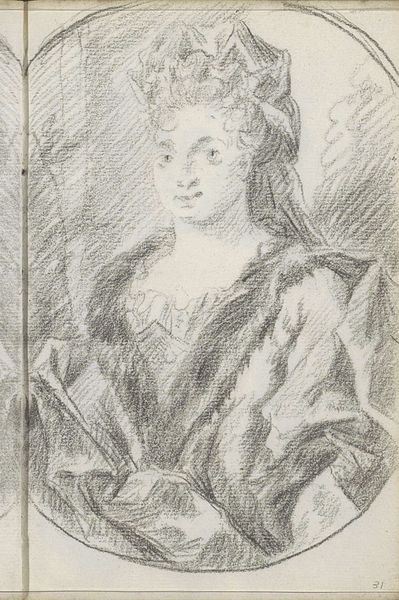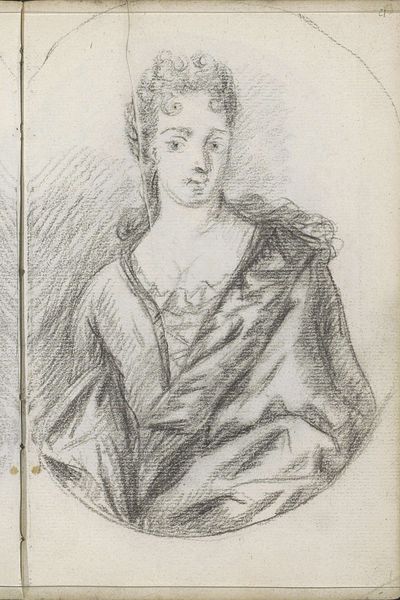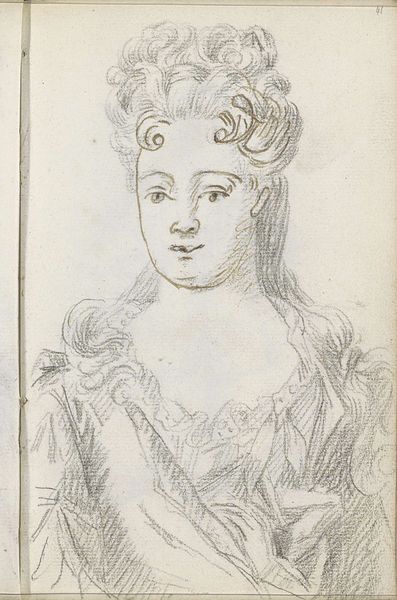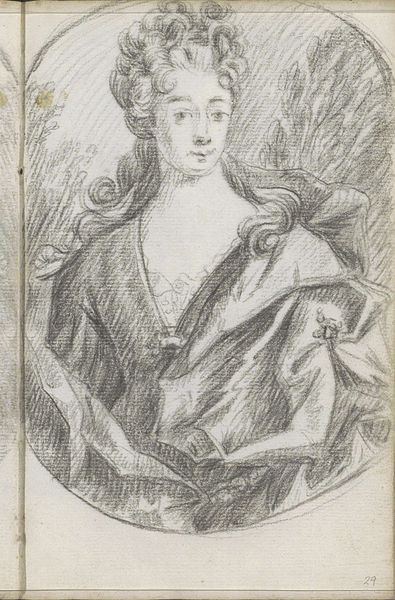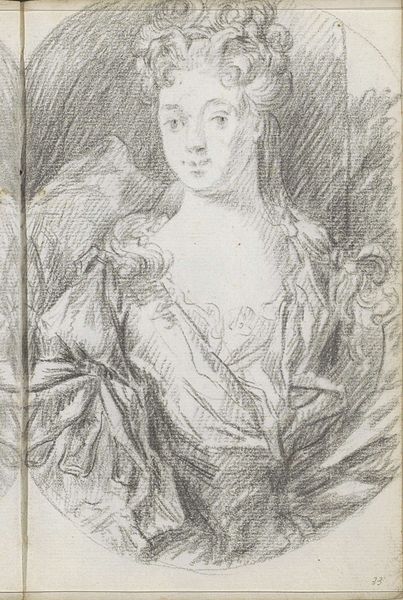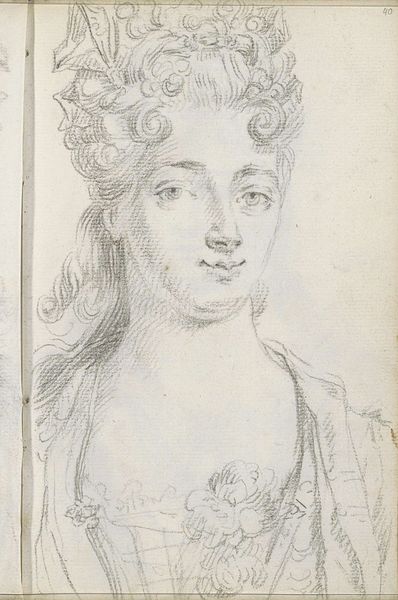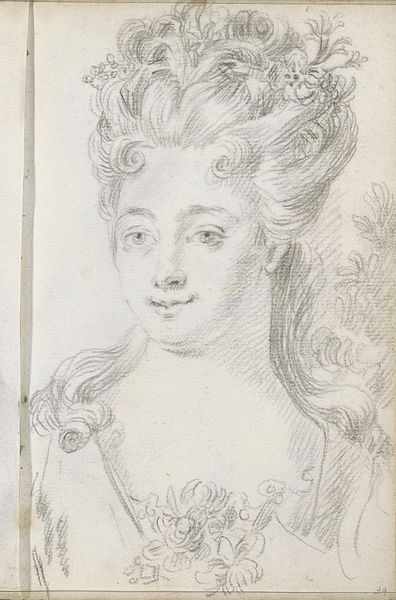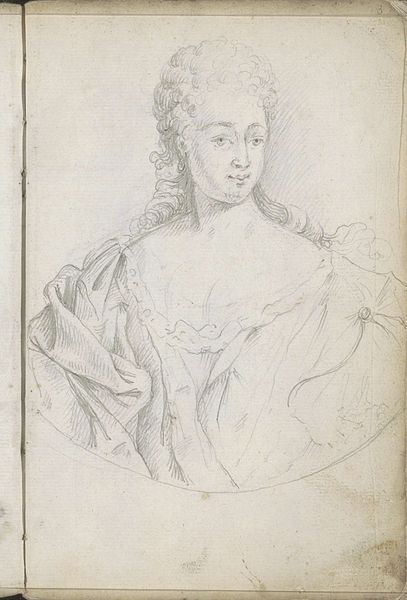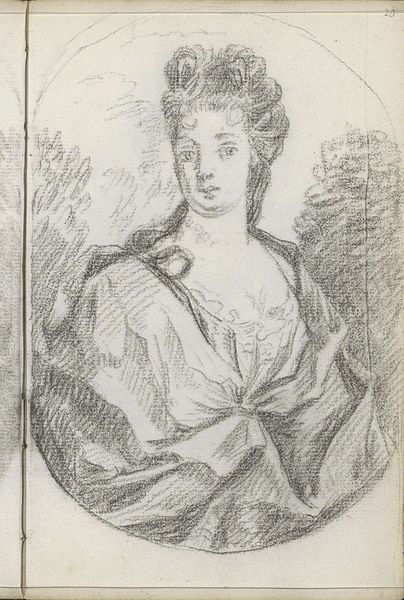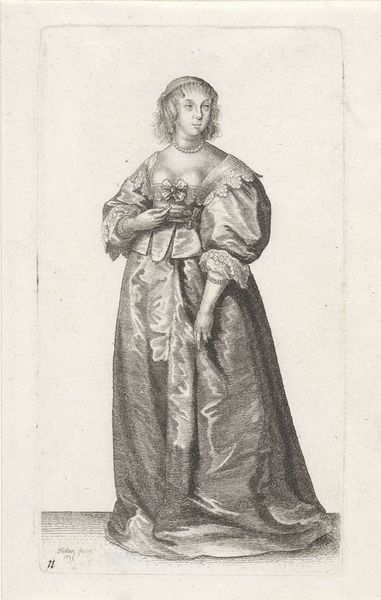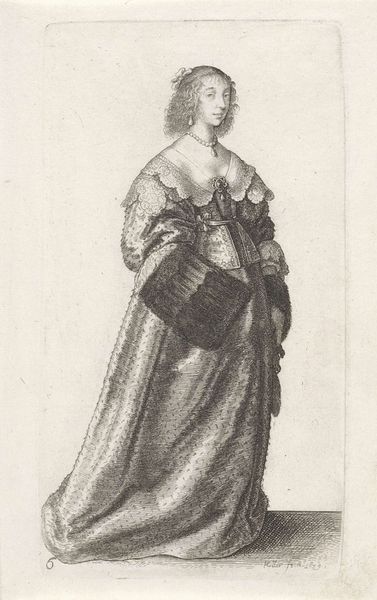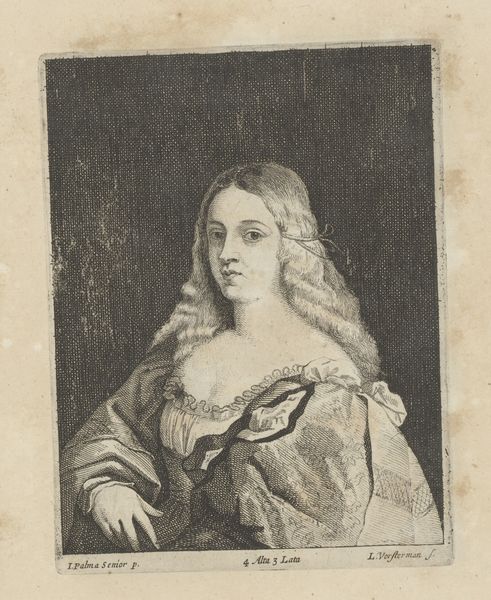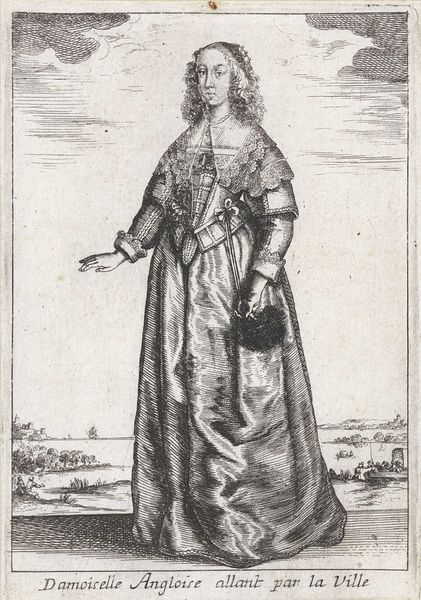
drawing, pencil
#
portrait
#
pencil drawn
#
drawing
#
self-portrait
#
figuration
#
pencil drawing
#
pencil
#
genre-painting
#
history-painting
#
academic-art
#
realism
Copyright: Rijks Museum: Open Domain
Curator: Let's turn our attention to "Portret van een vrouw" attributed to Petrus Johannes van Reysschoot, dating approximately from 1710 to 1772. A pencil drawing, offering a glimpse into a world of delicate portraiture. Editor: My immediate reaction is to the ethereal quality of the drawing. The soft, almost hazy, lines create a dreamlike impression. You can almost feel the texture of the paper itself. Curator: Indeed, the use of pencil lends itself to that impression. Reysschoot was working during a time when the Academies were solidifying artistic conventions, including a hierarchy of genres that often placed history painting at the top. However, portraiture was a crucial source of patronage and professional visibility. Editor: It’s interesting to consider the economic reality of art production at the time. This portrait would have relied on very different materials than large scale painting: paper and pencil rather than oils and canvas. We are seeing her dress indicated through the lightest pencil marks and ornamental details, perhaps lace, almost weightless. What does that imply about social value of representation? Curator: The accessibility and relative affordability of pencil portraits meant a broader segment of society could partake in the culture of image-making, yet that very access might subtly diminish the perceived prestige, when displayed within elite circles. Editor: I agree, and I think it's important to think about the labor involved. It would have taken many sittings, likely resulting in discomfort and demanding dedication of both the artist and sitter, no matter what level they may exist in society. We can see corrections; the traces of erasure remind us of the hand of the artist and time. Curator: And also the demands of portraying status. Consider the headdress and the intricate details of her clothing, even suggested so lightly. It conveys a particular social standing. Reysschoot expertly navigated that visual language. It begs the question of identity in the early 18th century. Editor: I am struck by how the soft focus almost makes her anonymous as she merges with the paper ground. In looking closer, it challenges any direct interpretation and I admire that. Curator: This piece certainly gives a new layer of appreciation to period art as one gains more sensitivity to not only artistry, but also socioeconomic factors influencing the artist's approach and artistic style. Editor: It moves me to ponder about the hands that created this piece. It helps highlight art not as an item but more of a reflection and labor.
Comments
No comments
Be the first to comment and join the conversation on the ultimate creative platform.
